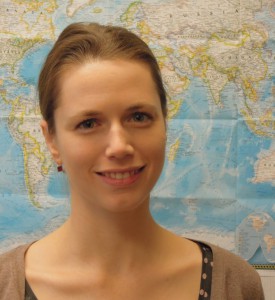
This is a guest post by Esmé Lanktree of the Global Health Research Initiative, and editor of supplements in Human Resources for Health and BMC Health Services Research.
Are we really facing a human resources for health (HRH) crisis? If we take crisis to mean a crucial moment in time, then an argument could be made against, as this is not a new problem. However, if we define crisis as ‘a situation that has reached a critical phase’ or ‘a difficult or dangerous situation that needs serious attention’ (see Merriam-Webster), then the current HRH situation is certainly a crisis.
The 2006 World Health Report: Working together for health estimated a shortage of over four million health workers, and according to the Global Health Workforce Alliance (GHWA) report A Universal Truth, this shortage is now of over seven million. According to the GHWA’s key messages, “a global deficit of 12.9 million health workers is estimated by 2035 against the threshold of 34.5 skilled health professionals per 10 000 people.”
These numbers reflect the magnitude of the shortage on the global scale. However, the picture is even more critical when the inequitable distribution of available health workers is taken into account. There are many imbalances which contribute to this inequitable distribution, which vary depending on the specific context.
For example, there may be a mix of types of health workers or proportion of health worker skills that are not aligned with the changing needs of the population (e.g. HRH review in South Africa). There may be an appropriate number of health workers but they may be concentrated in urban areas, or hospitals, leaving the rural population, or those serviced by health centres, with limited health services (e.g. Rao et al. 2012). The available health workers may be involved in dual practice, or may practice solely in private clinics, while the public system suffers.
What are the causes?
The 2006 World Health Report identified the workforce’s three driving forces as context, health needs and health systems. These are dependent not only on the burden of disease in a country, but factors ranging from the composition and distribution of the population, to poverty, politics, migration, education, finance, technology, infrastructure, policies, model of health service provision, etc.
Although the causes are multi-dimensional, they relate to a lack of comprehensive planning. Understanding this complexity is a first step towards tackling the problem.
Where is this happening and what does it mean for people living there?
The GHWA’s report found that 83 countries are currently experiencing an HRH crisis (i.e. less than 22.8 skilled health workers per 10,000 population). The regions most affected are South-East Asia and Africa.
This crisis is at its worst in poor, rural, and remote communities. Highly skilled health professionals generally prefer to work in urban areas, and incentives to recruit and retain skilled workers for isolated communities are not always effective (Goma et al. 2014).
For those living in these areas, the effects vary. They include long waiting times at health centres, absence of specialist services, long distances to travel for care, financial burden on patients and their families, etc.
What can be done?
Recently, there has been growing recognition of the problem. The Global Health Workforce Alliance was established in 2006 as a response to the crisis, and since then there have been regular fora on the subject.
The First Global Forum on Human Resources for Health was held in Uganda in 2008, followed by the second in Thailand (2011) and the third in Brazil (2013), reflecting the international nature of the crisis. At the Third Global Forum, 57 countries and 26 organizations presented HRH commitments, concrete steps toward improved human resources planning.
Although there is a need to increase the number of health workers to meet the current and future demands, there must be appropriate skills and distribution. This implies having a national plan with coordination across sectors to assess the needs of the population, and develop appropriate training programs to supply the right proportions of health workers with different skills.
Working with health workers to develop incentive packages or working conditions which will attract and retain health workers in rural and remote areas (Bocoum et al. 2014), and continuous monitoring to ensure responsiveness of the system will both also be key to success. This comprehensive planning and distribution of human resources is an essential prerequisite for universal health coverage (see Campbell et al. 2013).
Planning should be based on sound evidence. Although a lack of standardized HRH information has been documented (Riley et al. 2012), there has recently been greater research focus on the effectiveness of HRH policies and HRH interventions, such as shifting tasks from one cadre of health worker to another (Andriamanjato et al. 2014; Ochieng et al. 2014), and incentives, both financial and other.
The research conducted or being conducted on these subjects, including which interventions are most appropriate in different contexts, are equipping decision-makers with the evidence needed to plan for the future.
 Esmé Lanktree serves as Program Management Officer with the Global Health Research Initiative. The views expressed in this blog are those of the author alone and do not represent the views of the Global Health Research Initiative, the International Development Research Centre, the Canadian Institutes of Health Research, nor Foreign Affairs, Trade and Development Canada.
Esmé Lanktree serves as Program Management Officer with the Global Health Research Initiative. The views expressed in this blog are those of the author alone and do not represent the views of the Global Health Research Initiative, the International Development Research Centre, the Canadian Institutes of Health Research, nor Foreign Affairs, Trade and Development Canada.
Comments